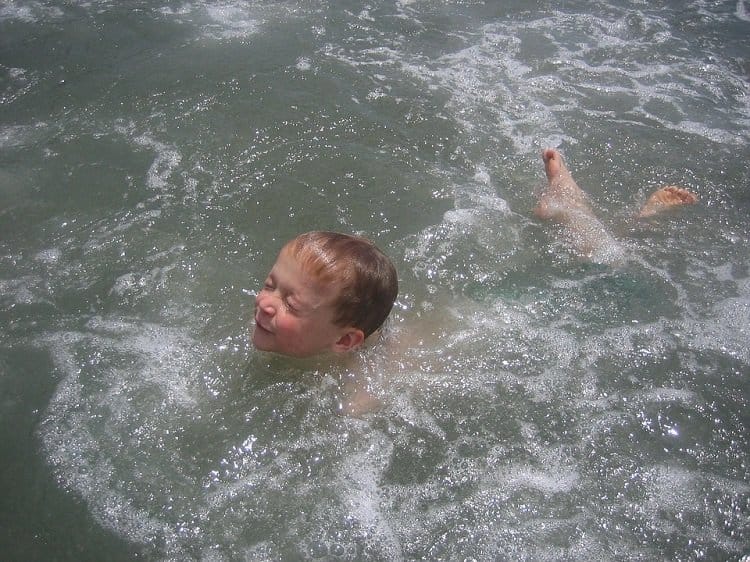
Children are drawn to water because it is sparkly and things float in it. However, water safety is not a joking matter because even the most experienced swimmer can have an accident in the water. Here are some guidelines for keeping your child safe from drowning:
General Water Safety
In any swimming environment, you should take the following steps to reduce the risk of drowning:
Avoid alcohol – you should not drink alcohol before taking your children swimming because your response time will be slower.
Supervise – you should not leave your kids unsupervised near swimming pools or natural bodies of water. If you are having a gathering, the adults should come up with a supervision system and take turns. You should not rely on air-filled toys to keep your children safe in the water.
Learn CPR – Childcare providers and parents should learn how to do CPR if they want to keep their kids safe.
Teach kids to swim – children who are above 4 years of age can learn how to swim. Kids who are between 1-4 years can also learn but this depends on their mental and physical development.
Residential Spas and Swimming Pools

To ensure that your child is safe in a residential spa or pool, you should:
Install alarms – the door that leads to the pool area should have an alarm. Moreover, you can install an under-water or floating alarm to warn you when your child gets into the swimming pool.
Fence it in – make sure that you install a fence of at least 4 feet to separate your house from the pool. However, the fence should not block your view of the swimming pool.
Avoid fences that a child can climb over easily and install a self-closing gate that has a latch beyond children’s reach.
Beware of drains – you should not allow children to play near hot tub or pool drains. The strong suction of a drain can entrap body parts and hair.
Keep emergency tools nearby – make sure that you keep equipment such as a life ring with a rope close to your swimming pool.
Block tub or pool access – you should use a motorized and rigid safety cover to block access to the swimming pool when you are not using it. Do not allow any water to collect on top of the hot tub or pool cover. Put away above ground ladders or pool steps to keep children from accessing the pool.
Remove toys – you should not leave pool toys in the water because your child might go in after it and end up drowning.
Natural Water Bodies

The swimming conditions in lakes, rivers, and oceans can be quite unpredictable because the water depth could change at a moment’s notice. Moreover, rapid weather and temperature changes make natural bodies of water unsafe for children. Here are some safety tips that will come in handy:
Feet first – before you let your kids swim, you should test the water. Jump with your feet first to test the water temperature and assess the hazards.
Wear a life jacket – adults and kids need to wear floatation devices when fishing or going for a boat ride. An air-filled floatation device is not a good substitute for a life jacket.
Beware of thin ice – children can drown in the winter too. You should avoid walking or skating on weak ice that is thawing. Make sure that you pay attention to posted warnings about the safety of ice and consult your local recreation department for the ice conditions. If you plan to spend time on frozen lakes during the winter, you should learn some rescue techniques.
Stay in designated areas – when you go to public beaches, you should swim in the designated swimming areas only. If you see any signs about unsafe swimming conditions, you should pay attention to them.
Buckets, Toilets, and Bathtubs
A small baby can drown in as little as one inch of water. When a curious toddler falls into a bucket, fish tank, or toilet, it will not take very long for him or her to die.
Here are some precautions:
Store buckets safely – make sure that you empty containers and buckets after use. Additionally, you should not leave them outside where they can accumulate water.
Close the bathroom door – you should install a doorknob or safety latch on the outside of your bathroom door.
Supervise bath time – you should not leave your child in the bathtub alone or under the care of another child. After using the bathtub, you should drain it immediately.
Shut toilet lids – you should consider installing a childproof lock on toilet lids to curb your child’s curiosity.
The above tips are useful if you want to keep your kids from drowning. If the worst-case scenario occurs, you will need to hire a drowning lawyer to represent your case in court.

